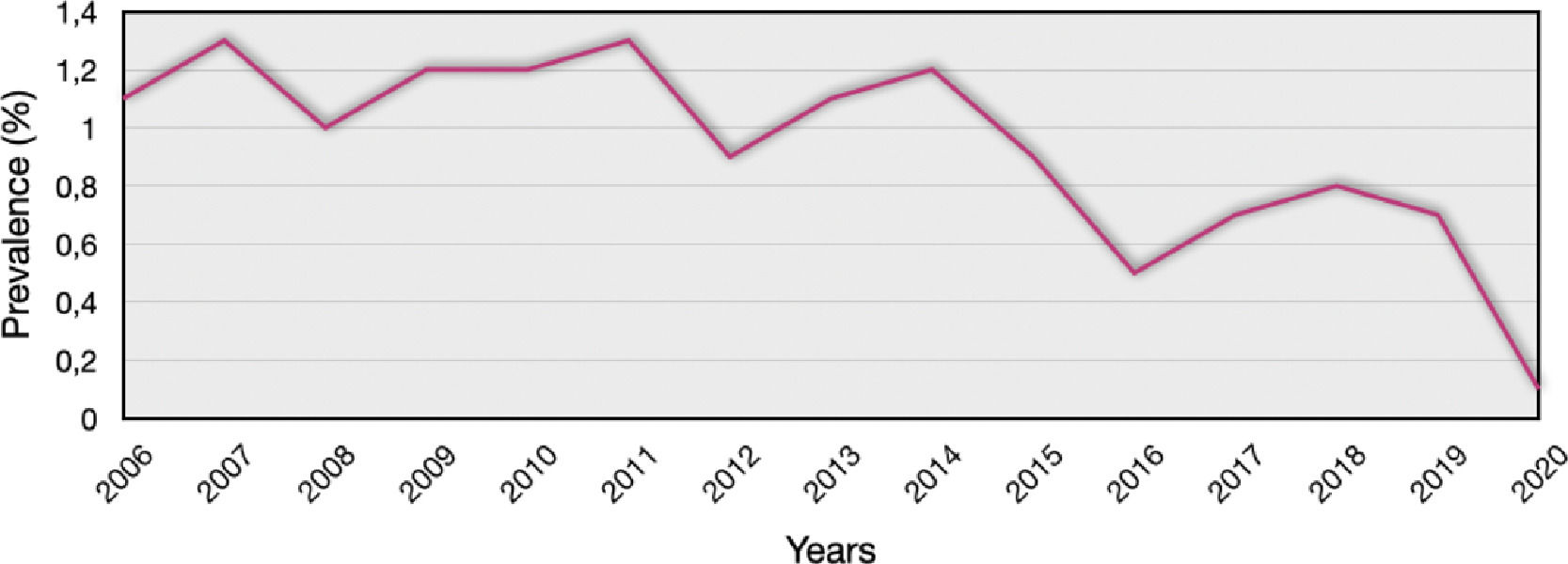
Abstracts of the 2022 Annual Meeting of the ALEH
Más datosIncreased utilization of hepatitis C virus (HCV)-positive organ donors has been endorsed as one of several ways to combat organ shortages. However, HCV-positive donors remain poorly characterized. This study aimed to evaluate the prevalence and utilization of HCV antibody (Ab) positive donors in Argentina.
Materials and MethodsWe performed a cross-sectional study to analyze data from the INCUCAI in Argentina from January 2006 to December 2020. Demographic and allograft characteristics were evaluated, and utilization of HCV Ab-positive donors across Argentina was studied. Anti-HCV (ELISA), was performed on all donors during the procurement process. A stratified analysis according to the type of donor and HCV Ab was done.
ResultsOverall, 16,140 deceased donors were denounced. Of these, 8627 (53.5%) were organ donors (7802 [90.4%] were effective) and 7513 (46.5%) were tissue donors. Demographic characteristics were age 42 ± 18 years and male/female ratio was 1.59/1. HCV Ab-positive was reported in 0,92% (n=149). The prevalence ratio per period among HCV Ab-positive donors (see graphic 1) showed that the highest prevalence was observed in 2007 (1.3%) and the lowest prevalence was in 2020 (0.1%). Prevalence for HCV Ab-positive among the type of donors was significantly higher in non-effective donors at 5.81% (n=48/825), followed by tissue donors at only 1.01% (n=76/7513) and lower in effective donors at 0.32% (n=25/7802; P<0.0001). Organ donors with HCV Ab-positive serology had less acceptance rate than those with HCV Ab-negative (34% vs. 90%; respectively, p<0.001). The solid organ transplants performed using HCV Ab-positive donors were 23 kidneys, five liver and one heart transplant. Only four transplants were performed after the advent of DAAs. Five-year recipient and graft survival in kidney and liver recipients was not adversely impacted by donor HCV Ab-positive status.
ConclusionsThe prevalence of HCV Ab-positive donors in Argentina is low and declining. Therefore, expanding the donor pool using HCV Ab-positive donors is a limited strategy in our country.











